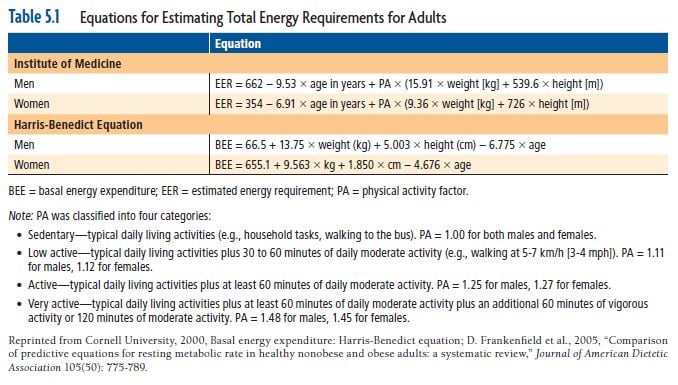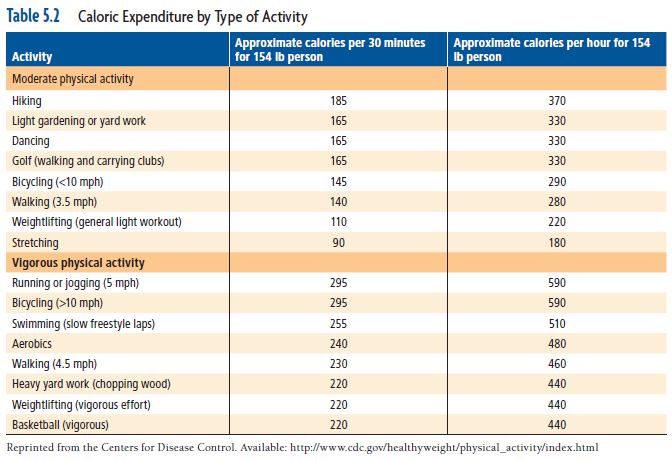Understand the Energy Demands of the Tactical Athlete
by NSCA's Essentials of Tactical Strength and Conditioning
Kinetic Select
June 2016
The daily energy requirements of tactical personnel are highly variable, depending on gender, body composition, activities performed, age, and environmental conditions.
The following is an exclusive excerpt from the book NSCA's Essentials of Tactical Strength and Conditioning, published by Human Kinetics. All text and images provided by Human Kinetics.
The daily energy requirements of tactical personnel are highly variable, depending on gender, body composition, activities performed, age, and environmental conditions. When thinking about the energy requirements of tactical athletes, it is necessary to have a general understanding of their basal energy expenditure, the energy demands of their training to maintain strength and endurance, and the energy demands of their job-related tasks.
Tactical athletes cannot be lumped into a single group. Just as there are a variety of positions on a football team and each player’s demands are based on position, goals, and amount of time on the field and in practice, each tactical athlete’s demands are based on incredibly different job functions. The functions of tactical athletes can range from tasks that require mental focus but do not have a large physical demand to tasks with a range of repeated strenuous functions that require incredible strength and endurance. Therefore, it is important to treat each athlete as an individual when it comes to thinking through nutrition needs.
The two main methods for measuring energy requirements are indirect calorimetry and doubly labeled water, which provide estimates of oxygen consumption and carbon dioxide production, respectively. Because these methods require expensive equipment and often are not practical in field settings, numerous prediction equations exist for estimating energy expenditure.
The U.S. Institute of Medicine (now known as the National Academy of Medicine) developed a set of equations for adult males and females (72). Table 5.1 provides examples of these equations for adult males and females. Using the formula in table 5.1, the estimated energy requirement for a 5-foot, 10-inch (1.78 m) male who weighs 154 pounds (70 kg), is 19 years old, and is very active would be approximately 3,551 kcal per day. Many other equations are also available, and the Harris-Benedict Equation is one that has been used for many years (table 5.1).

Studies in the military indicate that active-duty service members engaged in a variety of on-the-ground combat missions or in mountain warfare training may expend 3,500 to 7,000 kcal per day (110). A review of studies on 424 male military personnel from various units engaged in diverse missions determined that daily energy expenditures ranged from 3,109 to 7,131 kcal (mean 4,610 kcal) (135), measured over an average of 12.2 days. For 77 females studied, daily energy expenditures ranged from 2,332 to 5,597 kcal (mean 2,850 kcal) over 8.8 days. The highest energy requirements were in U.S. Marines in mountain warfare training at 2,550 m (8,366 ft) altitude at −15 °C to 13 °C (5-55 °F). Even the average daily energy requirements of these tactical athletes are greatly elevated above those of sedentary people, and meeting them can present significant challenges, especially when food availability is low or when time to eat while performing the mission is limited.
It is important to understand the amount of energy required to perform elements of specific job functions, which differs greatly among tactical athletes. Elsner and Kolkhorst (41) studied 20 firefighters who performed a series of 10 simulated firefighting tasks in full protective clothing:
- Advancing a 41 kg (90 lb) hose off the back of a fire engine for 35 m (38 yd) and connecting to a hydrant
- Carrying a 7.3 m (8.0 yd) extension ladder (33 kg [73 lb]) 30 m (33 yd) and extending it to a third-story window
- Donning a self-contained breathing apparatus (SCBA)
- Advancing two sections of fire hose (82 kg [181 lb]) from an engine to a stairwell 20 m (22 yd) away
- Using a 5 kg (11 lb) sledge to pound on a 75 kg (165 lb) wood block and move it 50 cm (20 in.) along a concrete floor
- Climbing three flights of stairs
- Pulling two sections of fire hose (82 kg [181 lb]) with a rope from the ground up to a third-story landing
- Advancing a fire hose 30 m (33 yd) through a cluttered area
- Returning to ground level by the stairs, shoulder loading an uncharged high-rise fire hose pack (23 kg [51 lb]), and returning to the third-floor landing
- Conducting a search and rescue to locate a 75 kg (165 lb) mannequin and drag it 30 m (33 yd)
Completion of this drill required 11.7 minutes on average. The mean VO2 was 29.1 ml·kg−1·min−1(8.3 METS, 62% VO2max, and firefighters reached 95% of predicted maximal HR. Excluding basal metabolism, this 11.7-minute drill required approximately 124 kcal of energy. This type of activity, extrapolated over several hours of firefighting, would result in significant energy requirements.
In addition to the daily demands of the tactical athlete’s core job functions, it is also necessary to consider any exercise the athlete engages in to maintain strength and endurance, as well as any other extracurricular physical activities. Table 5.2 gives estimates for the amount of calories burned in 30 minutes from a variety of activities for adults of three weights.

Key Point
When considering the energy demands of tactical athletes, it is important to estimate their basal metabolic rate and the demands of their job function, training (strength and endurance), leisure activities, and any intermittent acute changes to their typical activity level.
NSCA's Essentials of Tactical Strength and Conditioning is the ideal preparatory guide for those seeking the Tactical Strength and Conditioning Facilitator® (TSAC-F®) certification, and a reference for fitness trainers who work with tactical populations, such as military, law enforcement, and fire and rescue personnel. The book is available in bookstores everywhere, as well as online at the NSCA Store.
- Privacy Policy
- Your Privacy Choices
- Terms of Use
- Retraction and Correction Policy
- © 2025 National Strength and Conditioning Association